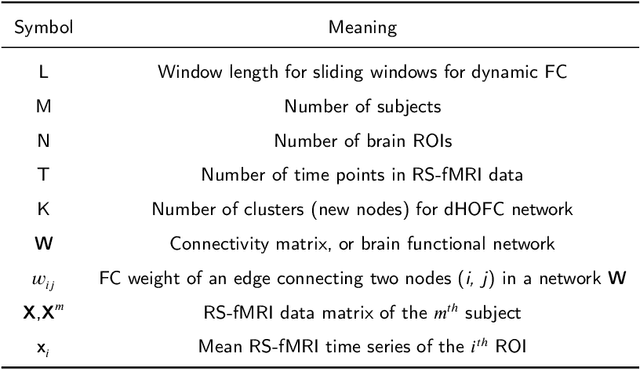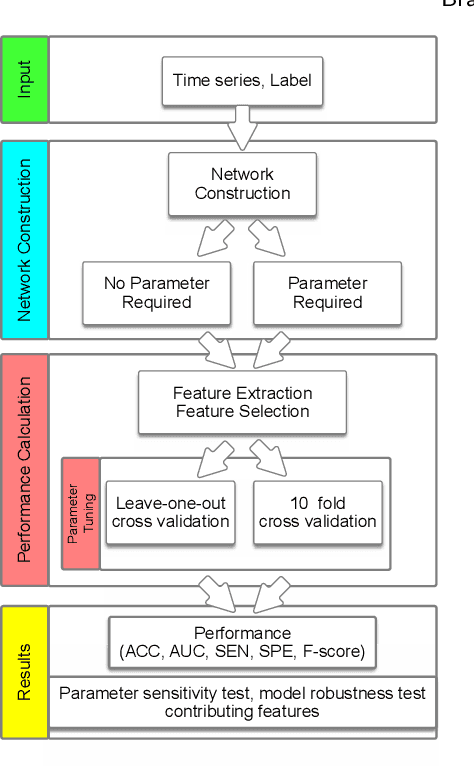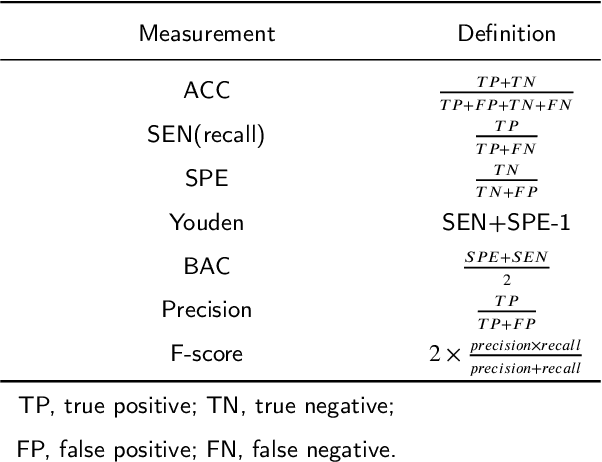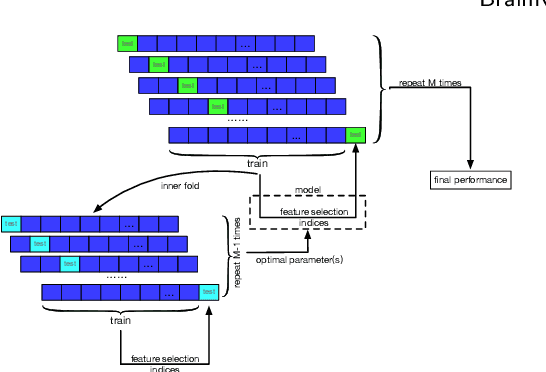Lishan Qiao
Preserving Specificity in Federated Graph Learning for fMRI-based Neurological Disorder Identification
Aug 20, 2023Abstract:Resting-state functional magnetic resonance imaging (rs-fMRI) offers a non-invasive approach to examining abnormal brain connectivity associated with brain disorders. Graph neural network (GNN) gains popularity in fMRI representation learning and brain disorder analysis with powerful graph representation capabilities. Training a general GNN often necessitates a large-scale dataset from multiple imaging centers/sites, but centralizing multi-site data generally faces inherent challenges related to data privacy, security, and storage burden. Federated Learning (FL) enables collaborative model training without centralized multi-site fMRI data. Unfortunately, previous FL approaches for fMRI analysis often ignore site-specificity, including demographic factors such as age, gender, and education level. To this end, we propose a specificity-aware federated graph learning (SFGL) framework for rs-fMRI analysis and automated brain disorder identification, with a server and multiple clients/sites for federated model aggregation and prediction. At each client, our model consists of a shared and a personalized branch, where parameters of the shared branch are sent to the server while those of the personalized branch remain local. This can facilitate knowledge sharing among sites and also helps preserve site specificity. In the shared branch, we employ a spatio-temporal attention graph isomorphism network to learn dynamic fMRI representations. In the personalized branch, we integrate vectorized demographic information (i.e., age, gender, and education years) and functional connectivity networks to preserve site-specific characteristics. Representations generated by the two branches are then fused for classification. Experimental results on two fMRI datasets with a total of 1,218 subjects suggest that SFGL outperforms several state-of-the-art approaches.
Leveraging Brain Modularity Prior for Interpretable Representation Learning of fMRI
Jun 24, 2023Abstract:Resting-state functional magnetic resonance imaging (rs-fMRI) can reflect spontaneous neural activities in brain and is widely used for brain disorder analysis.Previous studies propose to extract fMRI representations through diverse machine/deep learning methods for subsequent analysis. But the learned features typically lack biological interpretability, which limits their clinical utility. From the view of graph theory, the brain exhibits a remarkable modular structure in spontaneous brain functional networks, with each module comprised of functionally interconnected brain regions-of-interest (ROIs). However, most existing learning-based methods for fMRI analysis fail to adequately utilize such brain modularity prior. In this paper, we propose a Brain Modularity-constrained dynamic Representation learning (BMR) framework for interpretable fMRI analysis, consisting of three major components: (1) dynamic graph construction, (2) dynamic graph learning via a novel modularity-constrained graph neural network(MGNN), (3) prediction and biomarker detection for interpretable fMRI analysis. Especially, three core neurocognitive modules (i.e., salience network, central executive network, and default mode network) are explicitly incorporated into the MGNN, encouraging the nodes/ROIs within the same module to share similar representations. To further enhance discriminative ability of learned features, we also encourage the MGNN to preserve the network topology of input graphs via a graph topology reconstruction constraint. Experimental results on 534 subjects with rs-fMRI scans from two datasets validate the effectiveness of the proposed method. The identified discriminative brain ROIs and functional connectivities can be regarded as potential fMRI biomarkers to aid in clinical diagnosis.
Brain Network Construction and Classification Toolbox (BrainNetClass)
Jun 17, 2019



Abstract:Brain functional network has become an increasingly used approach in understanding brain functions and diseases. Many network construction methods have been developed, whereas the majority of the studies still used static pairwise Pearson's correlation-based functional connectivity. The goal of this work is to introduce a toolbox namely "Brain Network Construction and Classification" (BrainNetClass) to the field to promote more advanced brain network construction methods. It comprises various brain network construction methods, including some state-of-the-art methods that were recently developed to capture more complex interactions among brain regions along with connectome feature extraction, reduction, parameter optimization towards network-based individualized classification. BrainNetClass is a MATLAB-based, open-source, cross-platform toolbox with graphical user-friendly interfaces for cognitive and clinical neuroscientists to perform rigorous computer-aided diagnosis with interpretable result presentations even though they do not possess neuroimage computing and machine learning knowledge. We demonstrate the implementations of this toolbox on real resting-state functional MRI datasets. BrainNetClass (v1.0) can be downloaded from https://github.com/zzstefan/BrainNetClass.
 Add to Chrome
Add to Chrome Add to Firefox
Add to Firefox Add to Edge
Add to Edge